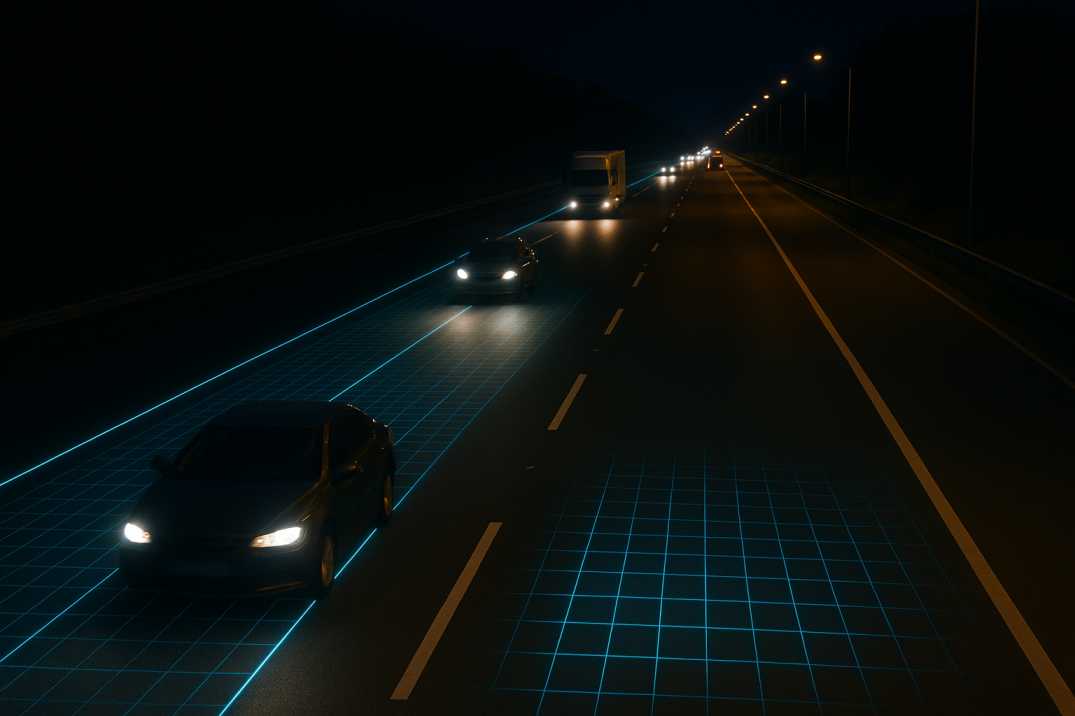Contact Us
RoadVision AI
Private Limited
Office No. 308 & 310, B Block
Ansal Chamber - 1, Bhikaji Cama Place,
Near Engineers India Limited (EIL) Bhawan, New Delhi - 110066
© 2024 | RoadVision AI | All rights reserved
Road safety in India depends heavily on the visibility of road markings, especially during night-time driving. According to the Indian Roads Congress (IRC) 67: Code of Practice for Road Markings, retroreflectivity standards are critical to ensure that markings remain visible under low-light and rainy conditions. As traffic density and vehicle speed increase across India’s highways and city roads, ensuring compliance with IRC 67 retroreflectivity India guidelines has become essential for both safety and efficiency.
With advancements in technology, AI road marking visibility and automated retroreflectometer AI systems are revolutionizing the way road authorities monitor and maintain pavement markings. These innovations are now a vital part of road asset management in India, reducing accidents and improving driver confidence at night.

The IRC 67 code defines standards for road marking materials, line thickness, color, and most importantly, retroreflectivity performance. Retroreflectivity refers to the ability of road markings to reflect light back to drivers, ensuring visibility during darkness or adverse weather.
As per IRC 67, road markings in India must:
However, due to rapid wear and tear from heavy traffic, monsoons, and construction activity, many markings across India fade below acceptable retroreflectivity levels, creating safety hazards.
India records a high number of road accidents at night due to poor marking visibility. Key challenges include:
To overcome these gaps, AI-based monitoring solutions are emerging as transformative tools.
AI road marking visibility systems use cameras, sensors, and machine learning algorithms to automatically detect and measure the retroreflective performance of road markings. By combining dashcam-based AI road surveys with advanced retroreflectometer readings, authorities can ensure compliance with IRC 67 retroreflectivity India requirements.
At RoadVision AI, we deliver cutting-edge solutions for AI-powered road marking visibility and retroreflectivity inspections. Our tools, including pavement condition surveys, road inventory inspections, and traffic surveys, help Indian authorities implement smart, cost-effective, and regulation-compliant systems.
Explore our case studies and industry insights on our blog to learn how AI is driving safer roads in India.
As India modernizes its highways under IRC 67 standards, ensuring night-time road safety in India requires embracing technology. By adopting AI road marking visibility systems and dashcam-based AI road surveys, authorities can guarantee compliance with retroreflectivity regulations, reduce accidents, and extend the life of road assets.
RoadVision AI is transforming infrastructure development and maintenance by harnessing artificial intelligence and computer vision AI to revolutionize road safety and management. By leveraging advanced computer vision artificial intelligence and digital twin technology, the platform enables the early detection of potholes, cracks, and other road surface issues, ensuring timely repairs and better road conditions. With a mission to build smarter, safer, and more sustainable roads, RoadVision AI tackles challenges like traffic congestion and ensures full compliance with IRC Codes. By empowering engineers and stakeholders with data-driven insights, the platform reduces costs, minimizes risks, and enhances the overall transportation experience.
Book a Demo with Us today to see how RoadVision AI can strengthen road asset management in India.
Q1. What is retroreflectivity in road markings?
Retroreflectivity is the ability of road markings to reflect vehicle headlight beams back to drivers, ensuring visibility at night.
Q2. Why is IRC 67 important for India?
IRC 67 sets mandatory standards for road markings, ensuring consistent visibility, safety, and compliance across India’s road networks.
Q3. How does AI help in retroreflectivity checks?
AI automates road marking inspections, measures retroreflectivity levels, and integrates findings into digital road maintenance systems for timely action.